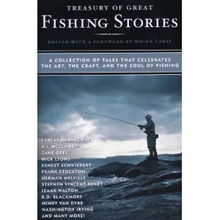Content:
Introduction: Fishing at a reservoir can be an incredibly rewarding experience, offering vast open waters and abundant fish populations. However, to ensure a successful day out, it is crucial to master the art of float adjustment. The float, or bobber, is a key component in detecting subtle movements of fish, and getting it right can make all the difference between a productive day and a frustrating one. In this article, we will delve into the essential tips and techniques for adjusting your float in reservoir fishing, helping you to become a more proficient angler.

Understanding the Float: Before we dive into the技巧, it is important to understand the various types of floats available and how they work. The most common types are the sliding float, the fixed float, and the waggler. Each type has its own advantages and is suitable for different fishing conditions.
- Sliding Float: This type of float moves up and down on the line, allowing for precise adjustments. It is ideal for slow or still water conditions.
- Fixed Float: As the name suggests, this float remains in a fixed position on the line. It is suitable for faster flowing water and is more visible to the fish.
- Waggler: This float is designed to wobble or waggle when fish nibble at the bait, making it easier to detect subtle bites.
Choosing the Right Float: The choice of float depends on various factors, including the water conditions, the type of fish you are targeting, and the depth of the water. For reservoir fishing, a sliding float is often the most versatile option.
Preparing the Float: Once you have chosen the right float, it is important to prepare it correctly. This involves adjusting the float so that it sits in the water column where the fish are likely to be. Here are some steps to follow:
- Attach the mainline to the float: Thread the mainline through the hole in the bottom of the float and tie a secure knot.
- Add a leader: Attach a short leader of 6-12 inches (15-30 cm) to the mainline using a loop knot or a uni knot. This leader helps to protect the float from snagging on the bottom.
- Adjust the weight: Add split shot or a weight to the leader to ensure the float sits in the desired depth. The weight should be enough to keep the float above the bottom but not so much that it hinders the float's movement.
Adjusting the Float for Different Conditions: Different fishing conditions require different float adjustments. Here are some tips for various scenarios:
- Windy Conditions: In windy conditions, the float may be affected by the wind, causing it to move erratically. To counteract this, add more weight to the bottom of the float to keep it stable.
- Slow Water: In slow or still water, you may need to add less weight to the bottom of the float. This allows the float to move more naturally and detect smaller fish movements.
- Fast Water: In fast-flowing water, use a heavier float and more weight to keep the float in position. This helps to ensure that the bait remains in the desired depth and does not get swept away by the current.
The Art of the Presentation: Once your float is properly adjusted, the next step is to present your bait in an appealing way. Here are some tips for a successful presentation:
- Natural Movements: Allow your bait to move naturally in the water. This can be achieved by gently twitching the rod tip or allowing the current to move the bait.
- Patience: Be patient and wait for the float to move. Fish may take a few moments to bite, so it is important to stay focused and not get discouraged.
- Sensitivity: Practice being sensitive to the smallest movements of the float. A slight tap or movement can indicate a fish taking the bait.
Conclusion: Mastering the art of float adjustment is a skill that takes time and practice to develop. By understanding the different types of floats, choosing the right one for the conditions, and adjusting it accordingly, you can greatly increase your chances of success when fishing at a reservoir. Remember to be patient, stay focused, and enjoy the process. With the right techniques, you will be well on your way to becoming a proficient reservoir angler. Happy fishing!












